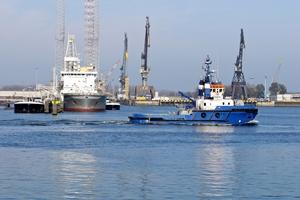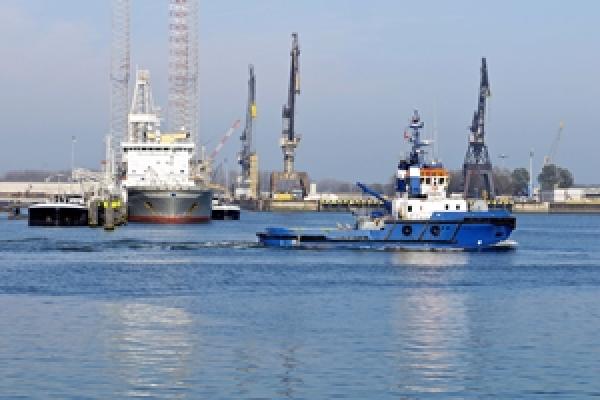
Steamship Mutual
Published: November 01, 2013

In Gard Marine & Energy Ltd v China National Chartering Co Ltd (The Ocean Victory) [2013] EWHC 2199 (Comm) the capesize bulk carrier “Ocean Victory” was ordered by time charterers to discharge iron ore at Kashima Port. At the port, weather conditions deteriorated so much that strengthening of the mooring arrangements and the assistance of two tugs to hold the vessel at the berth was required; however, following advice from time charterers’ local representative, the master departed for safety reasons. Navigating the narrow fairway during a severe gale and while exposed to heavy swell and winds of about force 9 on the Beaufort scale, the master lost steerageway and was driven on to the breakwater where the “Ocean Victory” ran aground and broke apart, requiring costly removal of the wreck.
Owners claimed that the port was prospectively unsafe.
Charterers alleged that the casualty had been caused by the negligent grounding of the vessel when leaving the port and also argued that what was relevant was “reasonable safety” and the taking “reasonable precautions” to avoid any hazard, as well as that a port cannot be deemed unsafe just because its systems do not guard against every hazard. Their position was that what was relevant was that there was a “reasonable” level of safety in the port. Moreover, at no time in the past had a vessel been exposed to the conditions that prevailed on 24th October 2006 so it could not be expected that the port would have a safety system in place to deal with events that were not foreseeable.
The legal definition of safety was set out in the judgement of Sellers LJ in negative terms in the Eastern City (1958) 2 LLR 127:
“ ... a port will not be safe unless, in the relevant period of time, the particular ship can reach it, use it and return from it without, in the absence of some abnormal occurrence, being exposed to danger which cannot be avoided by good navigation and seamanship.”
If it had been accepted, “reasonable safety” – as argued by charterers – would have introduced a new concept of safety. On the basis of the Eastern City and numerous other decisions, while safety is not absolute, if expressed in terms of a warranty – safe ports, safe berths, safe anchorages and places – the safe port provisions of a charter party will mean that charterers have given a warranty of safety and will be liable for resultant loss or damage if the safety issues: (i) were the effective cause of that loss or damage; and (ii) could not have been avoided by good navigation and seamanship. Therefore, the idea of what is reasonable safety is irrelevant. There either is or is not a warranty of safety and as such, charterers’ argument failed.
In “Ocean Victory”, the Court found that there was a risk that a safe exit from port on 24th October 2006 would require more than good navigation and seamanship and that the ship would not be able to maintain her preferred course when navigating in the narrow fairway into a gale force. Moreover, the conditions on the day could not be considered as an unusual event – i.e. it did not amount to “ … some abnormal occurrence”.
Having established a breach, the Court needed to assess whether the “unsafety” of the port was also the cause for the casualty. Charterers argued that it was not and pointed to five breaks in the chain of causation initiated by charterers’ representative’s advice to leave port. The breaks in the chain of causation were alleged to be, for example, the master’s misunderstanding that there had been a port order to leave or the sudden deterioration in the weather, as a result of which the departure of the vessel was cancelled. The Court did not agree and found that the effective cause for the casualty was the instruction given by charterers’ representative, a local experienced mariner, to leave port. The advice reflected the unsafety of the port as it was given without thought as to whether or not it was safe to do so. The fact that the master of the “Ocean Victory” would have preferred to stay as he believed that it would be dangerous to shift was not relevant as it was not unexpected that he would follow the orders from charterers’ representative who possessed local knowledge.
There was no negligence by the master and even if the Court had found that the master was negligent this would not break the chain of causation because any negligence by the master was a product/result of the unsafety of the port, which remained the real and effective cause of the casualty.
The decision of the Court of Appeal overturning the High Court decision that the port was unsafe is discussed here.


